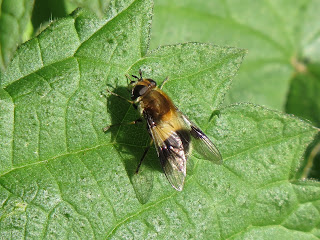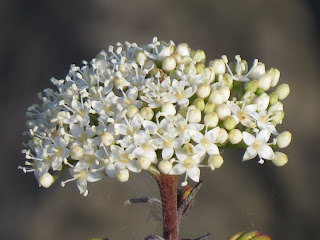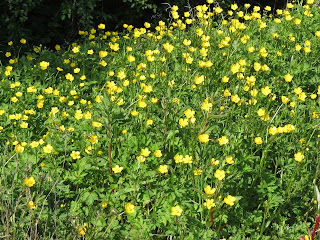Priorslee Lake, The Flash, Trench Lock Pool and Trench Middle Pool
5.5°C > 16.0°C: Fine with some thin high cloud. Calm start with light / moderate E wind later. Moderate visibility and rather hazy especially looking towards the sun. Some low-level mist over the lake early again.
Sunrise: 05:19 BST
The moon was full at 22:42:30 last night
Priorslee Lake: 04:35 – 07:00 // 07:55 – 09:26
(62nd visit of the year)
Another addition to my site year-list here: a (Common) Kestrel was hovering over the SW area today. This species was formerly regular and seemed to nest in the farm at the start of Woodhouse Lane. The last few years it has been very irregular and possibly comes from the Stafford Park area. My 92nd species this year here
Other notes from today:
- the pair of Tufted Duck seen early on had gone by 08:00
- the Great Crested Grebe noted for the last two days with hunched back feathers revealed at least 2 juveniles on rare occasions this morning
- with an earlier start (gulp!) managed to see at least part of the Jackdaws morning passage
- no fewer than 5 singing Goldcrests this morning
- at least one of the two Long-tailed Tit parties contained newly-fledged juveniles
- one of yesterday’s singing Garden Warblers seen with a presumed mate and not singing today. A new singing bird found as well
- another Lesser Whitethroat record: this bird was apparently singing from the Castle Farm Interchange O-about
- careful observation of the Common Whitethroats revealed at 6 singing males, all rather close together and easily confusable
- after yesterday’s record count of Sedge Warblers a lone bird sang but briefly from a most unsuitable patch of wooded area
- one of the Reed Warblers was singing along the S side this morning – for a while at least
- 4 different singing male Reed Buntings this morning
and
- no moths on the lamps again: the only insect present on the lamps was a plumed midge sp.
- Bee-fly (Bombylius major) again
- - at least 6 species of hoverfly were seen but I am still sorting out their identity
with
- 8 species of hoverfly noted: 7 of these photographed (see below): the Episyrphus balteatus [Marmalade hoverfly] got away before I could take its photo. No fewer than 3 of these species were new for me – I am still very much a newbie with this group
- a Common Carder Bee (Bombus pascuorum)
- a German Wasp (Vespula germanica)
On with the totals
Birds noted flying over the lake:
- 2 Stock Doves
- 3 Wood Pigeons
- 106 Jackdaws
- 2 Rooks again
- 1 Starling
Hirundine etc. counts: birds coming and going and not staying
- 6 Swifts again
- 1 Barn Swallow
Warblers counts: number in brackets = singing birds
- 11 (10) Chiffchaffs
- 2 (2) Willow Warblers again
- 16 (13) Blackcaps
- 5 (3) Garden Warblers
- 1 (1) Lesser Whitethroat
- 7 (6) Common Whitethroats
- 1 (1) Sedge Warbler briefly
- 6 (6) Reed Warblers again
The counts from the lake area
- 1 Mute Swan (other presumed on nest)
- 9 (7♂) + 4 (1 brood) Mallard
- 2 (1♂) Tufted Ducks: departed
- 1 Grey Heron once more
- 5 + 1? Great Crested Grebes (see notes)
- 1 Moorhen only
- 21 Coots
Here is the Great Crested Grebe that had been holding its back-feather erect for the last few days: we see why with one juvenile head poking out.
My 92nd species here this year: a female Kestrel hovering. This taken on ‘sports mode’ which uses a high shutter speed (and high ISO).
My ‘custom’ camera setting allows higher magnification but I did not have time to adjust the ISO and hence the lower shutter speed shows the blurred wings. It does illustrate how stationary the body is while hovering.
I think this the hoverfly Syrphus ribesii: it is a female – the eyes do not meet. And the hind femur is yellow. Hard to separate from Syrphus vitripennis.
This hoverfly is likely Melanostoma scalare (aka Chequered Hoverfly). Males and females are different shapes and when at rest, as here, the wings tend to obscure the markings.
Superficially like Melanostoma scalare this is in fact Xylota segnis, a species that runs around on leaves. A new species for me.
A very distinctive-looking fly with what appears to be a silver striped thorax – or is a trick of the light? Whatever: I can find nothing like this in my books.
A type of ‘greenbottle’ fly: there are seven species of similar Lucilia greenbottles and it requires detailed examination of the bristles and a knowledge of what to look for. So Lucilia sp. it stays.
This seems to be a Common Carder Bee (Bombus pascuorum). The only other bumblebee sp. with a ginger thorax is the Tree Bumblebee that has a white ‘tail’.
Now this is what I call a wasp. I think this is German Wasp (Vespula germanica) which is slightly larger than the Common Wasp.
Don’t see to many of these: an earwig, likely Forficula auricularia as the only common species in the UK.
Am struggling to get to grips with botany: I think this is Black Meddick (Medicago lupulina) growing on the dam. The ‘black’ epithet refers to the seeds.
Another botanical challenge. At first look appears to be an umbellifer but look at the leaves. I think this is White Stonecrop (Sedum album) growing on the dam.
I’ll do the flower and not the small beetles! This is Wood Avens (Geum urbanum) with a distinctive yellow 5-petal flower with prominent green ‘spikes’ between.
It is buttercup season: before the council contractors mow them all down here is a patch of Meadow Buttercups (Ranunculus acris).
5.5°C > 16.0°C: Fine with some thin high cloud. Calm start with light / moderate E wind later. Moderate visibility and rather hazy especially looking towards the sun. Some low-level mist over the lake early again.
Sunrise: 05:19 BST
The moon was full at 22:42:30 last night
Priorslee Lake: 04:35 – 07:00 // 07:55 – 09:26
(62nd visit of the year)
Another addition to my site year-list here: a (Common) Kestrel was hovering over the SW area today. This species was formerly regular and seemed to nest in the farm at the start of Woodhouse Lane. The last few years it has been very irregular and possibly comes from the Stafford Park area. My 92nd species this year here
Other notes from today:
- the pair of Tufted Duck seen early on had gone by 08:00
- the Great Crested Grebe noted for the last two days with hunched back feathers revealed at least 2 juveniles on rare occasions this morning
- with an earlier start (gulp!) managed to see at least part of the Jackdaws morning passage
- no fewer than 5 singing Goldcrests this morning
- at least one of the two Long-tailed Tit parties contained newly-fledged juveniles
- one of yesterday’s singing Garden Warblers seen with a presumed mate and not singing today. A new singing bird found as well
- another Lesser Whitethroat record: this bird was apparently singing from the Castle Farm Interchange O-about
- careful observation of the Common Whitethroats revealed at 6 singing males, all rather close together and easily confusable
- after yesterday’s record count of Sedge Warblers a lone bird sang but briefly from a most unsuitable patch of wooded area
- one of the Reed Warblers was singing along the S side this morning – for a while at least
- 4 different singing male Reed Buntings this morning
and
- no moths on the lamps again: the only insect present on the lamps was a plumed midge sp.
- Bee-fly (Bombylius major) again
- - at least 6 species of hoverfly were seen but I am still sorting out their identity
with
- 8 species of hoverfly noted: 7 of these photographed (see below): the Episyrphus balteatus [Marmalade hoverfly] got away before I could take its photo. No fewer than 3 of these species were new for me – I am still very much a newbie with this group
- a Common Carder Bee (Bombus pascuorum)
- a German Wasp (Vespula germanica)
On with the totals
Birds noted flying over the lake:
- 2 Stock Doves
- 3 Wood Pigeons
- 106 Jackdaws
- 2 Rooks again
- 1 Starling
Hirundine etc. counts: birds coming and going and not staying
- 6 Swifts again
- 1 Barn Swallow
Warblers counts: number in brackets = singing birds
- 11 (10) Chiffchaffs
- 2 (2) Willow Warblers again
- 16 (13) Blackcaps
- 5 (3) Garden Warblers
- 1 (1) Lesser Whitethroat
- 7 (6) Common Whitethroats
- 1 (1) Sedge Warbler briefly
- 6 (6) Reed Warblers again
The counts from the lake area
- 1 Mute Swan (other presumed on nest)
- 9 (7♂) + 4 (1 brood) Mallard
- 2 (1♂) Tufted Ducks: departed
- 1 Grey Heron once more
- 5 + 1? Great Crested Grebes (see notes)
- 1 Moorhen only
- 21 Coots
About as ‘full’ as it gets. It was officially full at 22:42:30 last night.
Made it to the lake before the sunrise: this is how it started.
As the dawn progressed there was some colour.
A slightly different perspective.
And a much later view.
The plumed midge on a lamp this morning: no idea of the species.
This is the hoverfly Helophilus pendulus (aka The Footballer). My earliest record of this species.
Superficially like Melanostoma scalare this is in fact Xylota segnis, a species that runs around on leaves. A new species for me.
This is the hoverfly Leucozona lucorum
A different view shows the wing-shading to greater effect.
This hoverfly is Daysyrphus albostriatus: another new species for me
Meanwhile this is Merodon equestris: the 3rd new species of hoverfly for me today
As is this.
This may, or may not, be the fly Eudasyphora cyanella!
On safer ground: a Dark-edged Bee-fly (Bombylius major).
A close-up: the close relationship with clovers is obvious.
Here a close-up of the flower-cluster
This one is easy: yet to open this is Valerian (Valeriana officinalis).
It is buttercup season: before the council contractors mow them all down here is a patch of Meadow Buttercups (Ranunculus acris).
(Ed Wilson)
------------------------------------------------------------------------------------------------------
The Flash
New Mute Swans on The Flash today. Our 2017 brood have ventured out this morning. The Cob is overjoyed to have the Pen back on the water, and through my binoculars there appear to be 5 cygnets.
(Ann Dewhurst)
The Flash: 07:10 – 07:50
(47th visit of the year)
Notes from here
- another frustrating glimpse of the large Accipiter sp. flying with very flexible wing-beats. Surely it is a Goshawk? But I still need much better views
- although House Martins were heard none was seen and there is no evidence they have returned to nest on the estate as yet. They have been present around Newport for at least 3 weeks and are in good numbers now
- could not hear the Garden Warbler this morning
Birds noted flying over
- 1 Jackdaw
Hirundine etc. counts
- 3 Swifts
- House Martins heard
Warblers counts: number in brackets = singing birds
- 2 (2) Chiffchaffs
- 1 (1) Blackcap only
The counts from the water
- 1 Mute Swan (other presumed on nest)
- 17 Canada Geese
- [the white feral goose not seen]
- 15(13♂) Mallard
- 6 (3♂) Tufted Duck again
- 1 Great Crested Grebe still
- 3 Moorhens
- 19 + 6 (3 broods) Coots
A duck Mallard on a roof in great light provides an ideal portrait from an usual perspective.
And here looking alert.
I am sure their mother loves them but juvenile Coots do not appeal to me
Between the lake and The Flash alongside the path
- just the usual singing Blackcap and no Chiffchaff today
(Ed Wilson)
------------------------------------------------------------------------------------------------------
Trench Lock Pool: 09:34 – 10:00 // 10:35 – 10:45
(20th visit of the year)
Notes from here
- the long-remaining cygnet now gone
- no broods of Coots on the open water: several juveniles glimpsed and heard in the reeds etc
- several gulls logged were very distant with one Lesser Black-backed bird briefly stopping
- my first Swifts of the year here
- a singing Goldcrest was new for me at this site in 2017
- no sign of any House Martins around the local estates
Birds noted flying over here
- 3 Lesser Black-backed Gulls
Hirundine counts
- 2 Swifts
Warblers counts: number in brackets = singing birds
- 1 (1) Chiffchaff
- 1 (1) Blackcap
The counts from the water
- 2 Mute Swans
- 4 Canada Geese
- 2 + 1 Great Crested Grebes
- 2 Moorhens
- 26 + ? (>1 brood) Coots
- 1 Lesser Black-backed Gull briefly
And
- I did a log of the plants seen in flower here: in no particular order:
Daisy (Bellis perennis)
Cow Parsley (Anthriscus sylvestris)
Dandelion sp. (probably Taraxacum officinale)
Meadow Buttercup (Ranunculus acris)
Red Campion (Silene dioica or Melandrium rubrum)
Red Deadnettle (Lamium purpureum)
Hedge Garlic or Jack-by-the-Hedge (Alliaria petiolata)
Lady's Smock / Cuckooplant (Cardamine pratensis)
Hawthorn (Crataegus monogyna)
Ribwort (Plantago lanceolata)
Tufted Vetch (Vicia cracca)
Horsetail (or Mare's tails) (Equisetum arvense)
Welsh poppy (Meconopsis cambrica) [probably a garden escape]
I did White Dead-Nettle (Lamium album) at The Flash: here is Red Dead-Nettle (Lamium purpureum)
Welsh poppy (Meconopsis cambrica): probably a garden escape. Can be orange or......
... yellow
Prickly Sow-Thistle (Sonchus asper). Not very prickly, certainly not like a ‘real; thistle.
(Ed Wilson)
------------------------------------------------------------------------------------------------------
Trench Middle Pool: 10:05 – 10:30
(16th visit of the year)
Notes
- many goslings today
- 2 Great Crested Grebes juveniles with just 1 parent: other perhaps back on nest for another brood
- at least 3 broods of Coots
- another singing Goldcrest this morning and was also new for me at this site in 2017
Birds noted flying over here
None
Warblers counts: number in brackets = singing birds
- 3 (3) Chiffchaffs
- 3 (2) Blackcaps
The counts from the water
- 1 Mute Swan (other presumed on nest)
- 20 + 20 (5 broods) Greylag Geese
- 31 + 10 (2? broods) Canada Goose
- 9 (8♂) Mallard
- 1 + 2 Great Crested Grebes
- 2 Moorhens
- 13 + 6 (3 broods) Coots
And
- I also made a log of the plants seen in flower here: in no particular order:
White Dead-Nettle (Lamium album)
Cow Parsley (Anthriscus sylvestris)
(English) Bluebell (Hyacinthoides non-scripta)
Daisy (Bellis perennis)
Dandelion sp. (probably Taraxacum officinale)
Common Comfrey (Symphytum officinale)
Hawthorn (Crataegus monogyna)
Gorse (Ulex sp.)
Oxford Ragwort (Senecio squalidus)
Wood Avens (Geum urbanum)
A pair of proud-parent Greylag Geese.
Very fluffy!
As noted at The Flash juvenile Coots are less appealing.
(Ed Wilson)
------------------------------------------------------------------------------------------------------
On this day in ...........
2016
Priorslee Lake
Today's Sightings Here
2015
Priorslee Lake
Today's Sightings Here
2014
Local area
Today's Sightings Here
2012
Priorslee Lake
Common Scoter
(Andy Latham)
2006
Priorslee Lake
2 Ruddy Ducks
(Ed Wilson)
(Andy Latham)
2006
Priorslee Lake
2 Ruddy Ducks
(Ed Wilson)














































